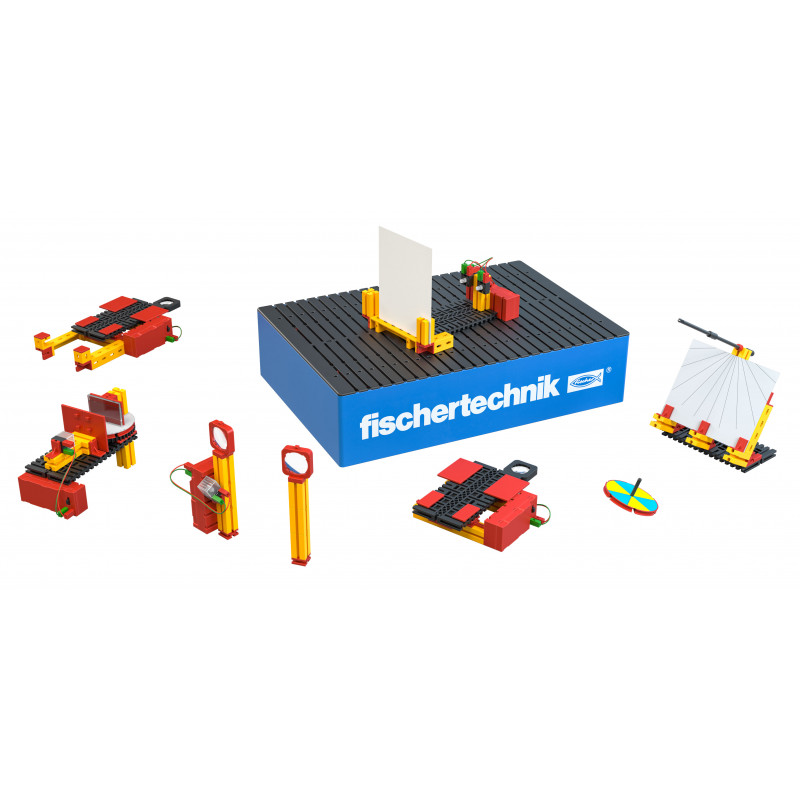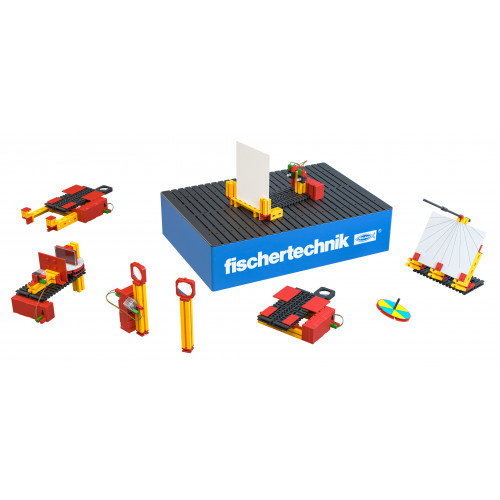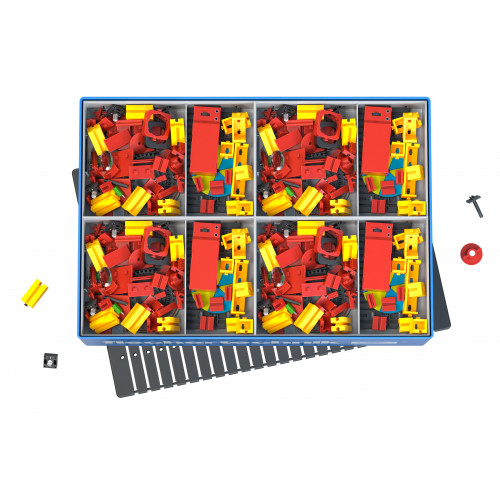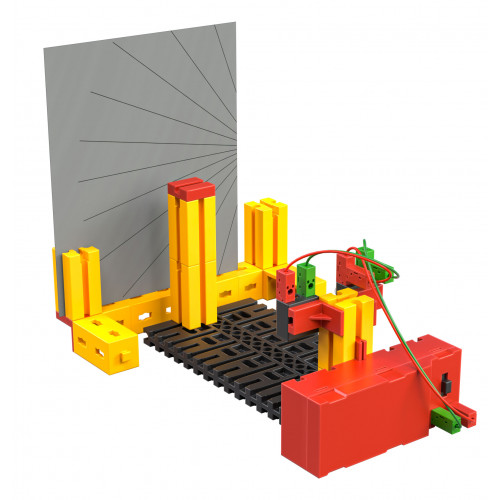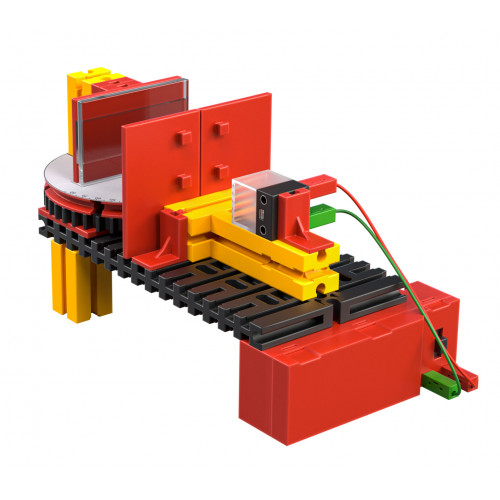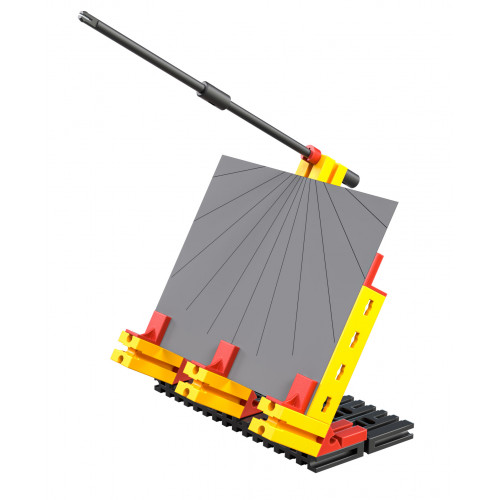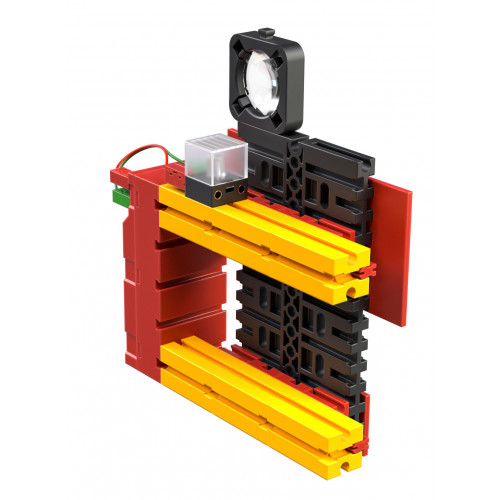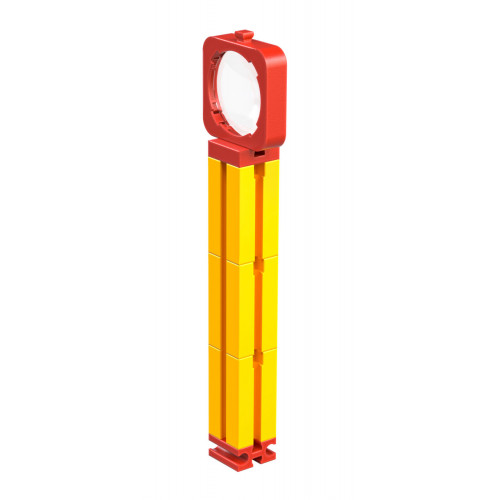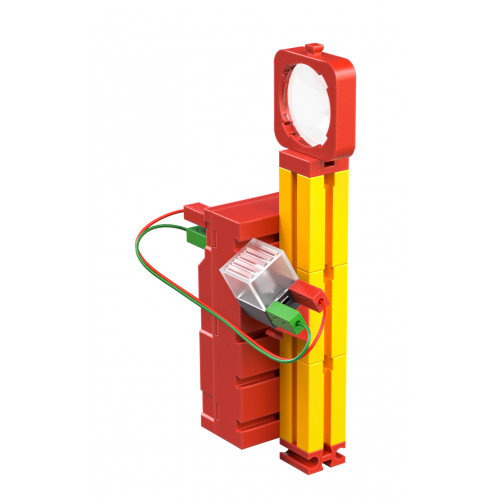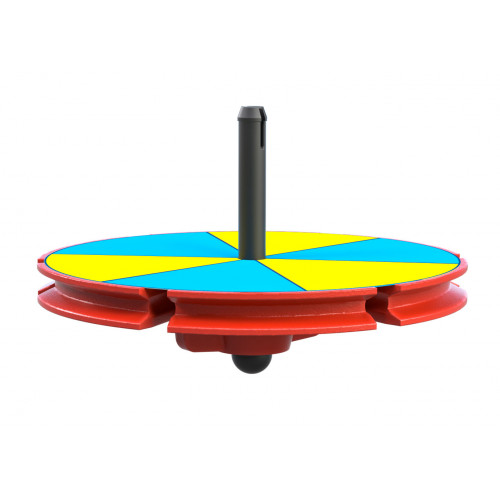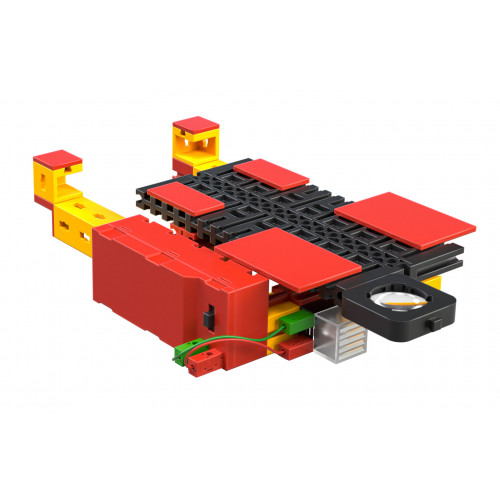CLASS SET Optics
Are you a school or company and do you want to order on account? Please contact us.
Learn about optical phenomena in the classroom and conduct experiments with light! Discover the concepts of umbra and penumbra, look at exciting objects under a magnifying glass, or tell the time using a sundial. These and other exciting topics are fun to learn about using the Class Set Optics. The building kit offers six models that are quick to build and easy to use in the classroom, alongside 6 exciting experiments. A class set contains 16 individual sets and is suitable for 30 pupils and one teacher, for example.
Accompanying teaching material:
fischertechnik Education products include comprehensive, freely accessible teaching materials. These have been developed together with teacher training colleges, teachers and didacticians and are ideally suited to the needs of the classroom. In addition to the topic introduction, lesson plans with task sheets and educational plan references are available.
- The topic introduction provides content that can be optimally used for lesson preparation and integrated into the lessons. Definitions, history, basic knowledge and much more are provided.
- The teaching material includes an overview of the learning objectives as well as the time required for the tasks.
- In line with the curriculum-relevant topics, various tasks are included within which different experiments are dealt with.
- The tasks are divided into a construction task, thematic task and experimentation task. In this way, one progresses from building, to learning technical content, to applying the acquired knowledge.
Optical phenomena
Light experiments
Enlargement
Reflection
Light and shadow
The word “optics” comes from the Greek, and means “to see”. Optics is a sub-field of physics which deals with the diffusion of light, reflection and refraction, the formation of images on mirrors and lenses, optical equipment, the formation of colours and the laws of colour mixing, as well as the question of what light itself actually is.
Famous scientists and researchers
Many famous scientists and researchers have researched the properties of light. The following are a few examples of such scientists.-
- In ancient times, EUCLID (a Greek mathematician from Alexandria, approx. 300 BC) wrote about the linear diffusion of light and formulated the law of reflection.
- Claudius PTOLEMAEUS (approx. 100 - 160 AD) also taught in Alexandria. He produced the first tablets addressing the correlation between the angle of incidence and angle of refraction, and texts regarding the refraction of light in the atmosphere.
- ALHAZEN, an Arabian scholar (965 - 1040), studied reflection on curved mirrors, the refraction of light in the atmosphere, and magnification using lenses. He recognised and described the use of convex glass surfaces for optical magnification. This science later blossomed in the Middle Ages, with the development of glass lenses, which allowed for the construction of glasses, telescopes, microscopes and spectroscopic instruments.
- Johannes KEPLER (1571 - 1630), a German astronomer, physicist, mathematician and natural philosopher, explained that human vision occurred via the retina, and predicted the creation of images using pinhole cameras. In contrast to the telescope invented by GALILEO (1564 - 1643) his design for the telescope which was named after him (Keplerian telescope) uses two convex lenses. He made optics into a field of scientific study, and confirmed the discoveries his contemporary Galileo Galilei had already made using the telescope.
- Francesco Maria GRIMALDI (1618 -1663) hypothesised that light spread in the form of waves, similar to sound, and was one of the first to describe the diffraction and interference of light as it passes through small openings.
- Isaac NEWTON (1642 - 1727) succeeded in systematically splitting white light into the different colours of the spectrum using a prism. He invented the first reflecting telescope (which uses a concave mirror as the lens instead of a convex one). In his analysis of reflection and refraction, Newton assumed that light consisted of tiny particles.
- Léon FOUCAULT (1819 - 1868) used a mirror rotating at high speed to calculate the speed of light in a vacuum and in air at around 298,000 km/s.
- We can also include Albert EINSTEIN (1879 - 1955) in the long line of scientists and researchers who worked to understand the secrets of light. He hypothesized that light consists of tiny packets of energy, called photons. Modern quantum physics assumes that light does not behave either like a classic wave or a classic particle, Instead, light has characteristics of both a wave and a particle.
If you asked most people, they would probably say that “sight” was the most important of their six senses. No one wants to lose their ability to see. But what can we actually see, in reality?
In contrast to technical optics, so-called physiological optics deals with the theory of visual perception (sight, colour perception, and optical illusions).
In principle, “all we can see” with our eyes is light. To be able to turn that light into a detailed image, our eyes have to be able to quickly evaluate a large number of different light waves and transmit that information to the brain. These light waves determine the properties of the light: Direction, brightness, and colour.
But where does colour come from? Colour phenomena can also be categorised. We see colours,
• when light is transmitted within certain ranges of wavelengths, for instance by fireworks.
• when our retina is irritated (for instance by rubbing your eyes).
• when light is split and reflected in different directions, such as in a rainbow.
• when light enters the eye through reflection from the surface of a body and its composition differs from that of the light source. In this phenomena, part of the light is absorbed, and part of the light reaches the eye.
These everyday experiences are all examples of optical phenomena that can be understood even by primary school students.
All of the primary school educational and lesson plans for the different countries address questions about inanimate nature. Learning about light and colour phenomena is one aspect of this, and is dealt with in the four major topics of
• Perceiving the world through our senses: sight, the eye,
• Light and life: Adaptations of plants, animals and people,
• Properties of light: Reflection, refraction, diffusion, and focus
• Light and shadows
to various extents. These topics should be linked thoroughly to other educational areas.
The experiments in this fischertechnik building set are a great way to learn about the three basic properties of light in a fun way, while understanding how these properties connect to our everyday lives. The building set is perfectly designed for integration into project work. Students can:
• determine and change the direction of light using mirrors
• influence the brightness of light using shadows
• investigate light and colour with gyroscope experiments
• understand how display screens work using magnifying glasses
| fischertechnik construction kit information | |
| Number of parts | 75 (x16 Sets) |
| Number of models | 6 |
| Contents fischertechnik CLASS SET Optic | Download |

























